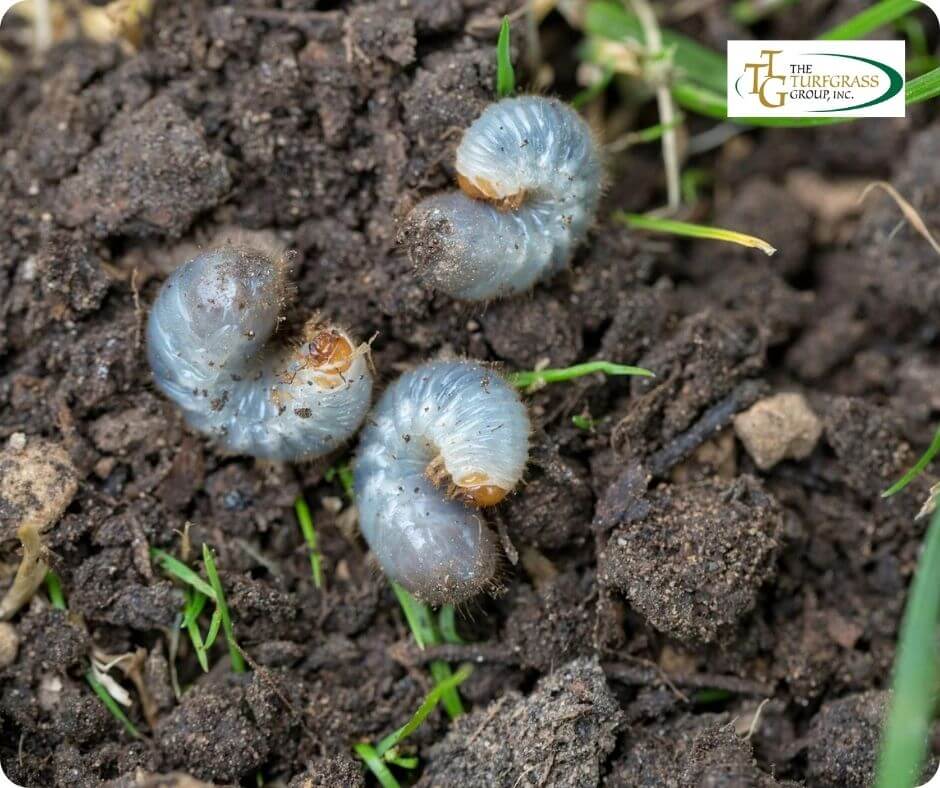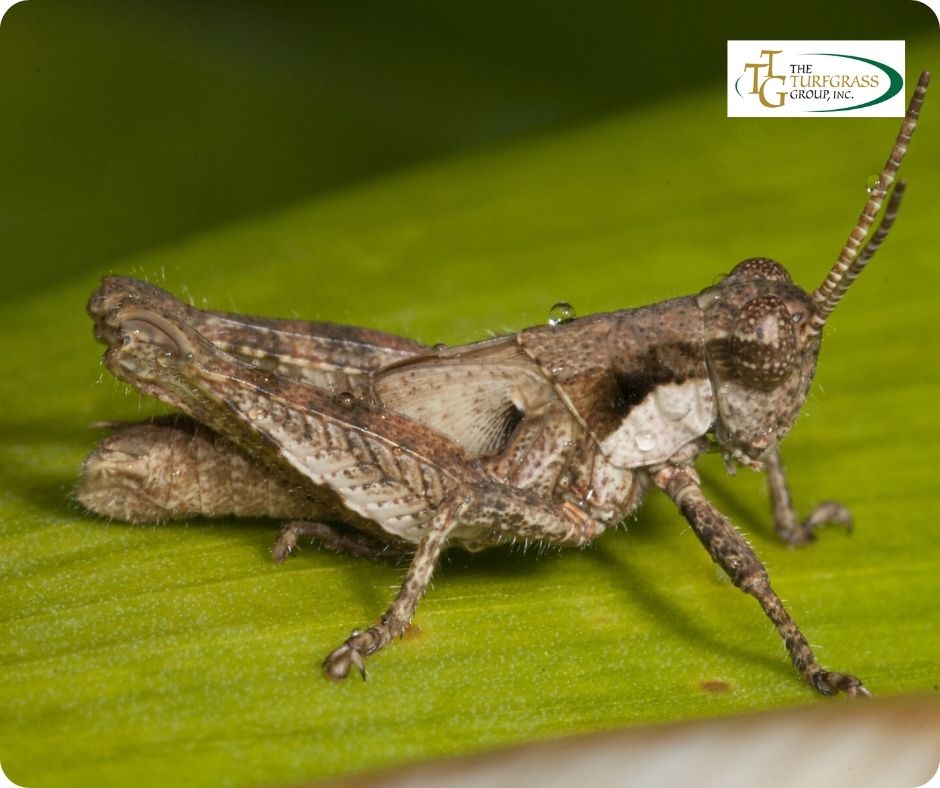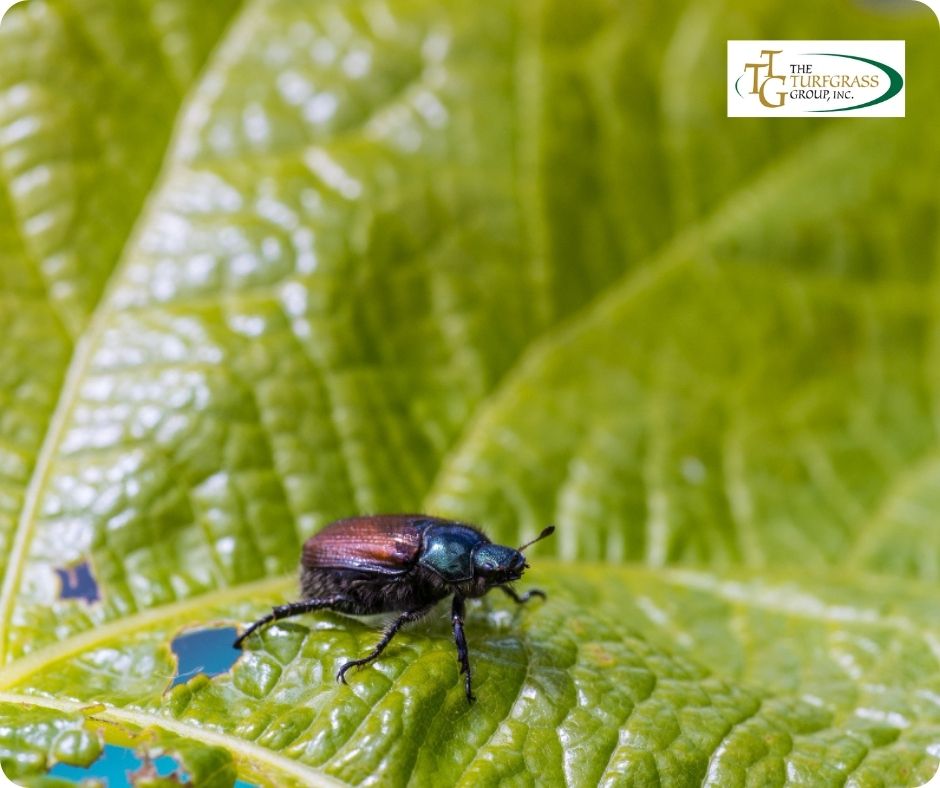
As the warmth of spring revitalizes lawns, it also beckons a myriad of pests that can wreak havoc on your meticulously cared-for turf.
From voracious insects to opportunistic rodents, these pests pose a threat to the health and aesthetics of your lawn.
Understanding the types of pests that emerge during spring and implementing effective management strategies is crucial for maintaining a vibrant and pest-free lawn.
In this article, we delve into the spring lawn pests to watch out for and provide insights into how to identify, prevent, and control their infestations.
Common Spring Lawn Pests
White Grubs: White grubs, the larvae of beetles such as Japanese beetles, chafer beetles, and June bugs, are notorious for their destructive feeding habits.
Emerging in spring, these creamy-white larvae feed on grassroots, leading to brown patches and weakened turf.
Their presence becomes evident as the grass begins to wilt and detach from the soil, indicating extensive root damage.
Chinch Bugs: Chinch bugs thrive in warm weather and are particularly active during spring and summer.
These tiny insects pierce grass blades and suck out the sap, causing yellowing and, eventually, death of the affected turf.
Chinch bug infestations often start at the edges of lawns, gradually spreading inward if left untreated.

Armyworms: Armyworms are voracious caterpillars that can rapidly decimate grass blades, leaving behind barren patches in their wake.
These pests are especially prevalent during spring when favorable temperatures accelerate their growth and activity.
Identifying armyworm infestations early is crucial for preventing widespread damage to the lawn.
Moles and Voles: While not insects, moles and voles are common spring pests that can wreak havoc on lawns.
Moles tunnel underground, uprooting grass and creating unsightly ridges, while voles feed on grass roots and stems, leaving behind gnawed vegetation and shallow runways.
Mounds of displaced soil and surface tunnels often indicate their presence.
Identification and Monitoring
Early detection of lawn pests is essential for prompt intervention and mitigating potential damage.
Regular inspection of the lawn for signs of pest activity is crucial during spring.
Look for indicators such as irregular patches of discolored or wilted grass, the presence of insects on the soil surface, chewed grass blades, or evidence of burrowing animals.
Additionally, monitoring tools such as pitfall traps, pheromone traps, and soil sampling can aid in identifying specific pest species and assessing population levels.
Preventive Measures
Maintain Proper Lawn Care: A healthy and vigorously growing lawn is more resilient to pest infestations.
Implement proper lawn care practices such as regular mowing, adequate watering, and fertilization to promote robust turf growth and minimize stress on grass plants.
Promote Biodiversity: Foster biodiversity in your yard to encourage natural predators of lawn pests.
Plant native flowers, shrubs, and trees to attract beneficial insects such as ladybugs, lacewings, and predatory wasps, which prey on common lawn pests.
Practice Proper Watering: Overwatering can create favorable conditions for certain lawn pests, such as fungal pathogens and grubs.
Water deeply and infrequently, preferably in the early morning, to ensure that the soil dries out between watering sessions, thereby discouraging pest activity.
Implement Barrier Methods: Create physical barriers to deter pests from accessing the lawn.
Install fencing or barriers to prevent rodents such as voles from entering the yard, and use floating row covers to protect vulnerable plants from insect pests.
Apply Beneficial Nematodes: Beneficial nematodes are microscopic organisms that prey on soil-dwelling pests such as grubs and larvae.
Introducing nematodes to the lawn can help suppress pest populations without harming beneficial organisms or the environment.
Control Strategies
Biological Control: Biological control involves using natural enemies such as parasitic wasps, predatory insects, and nematodes to regulate pest populations.
Release beneficial organisms into the lawn to target specific pests while minimizing the use of chemical pesticides.

Insecticidal Soaps and Oils: Insecticidal soaps and oils are effective, low-toxicity alternatives for controlling soft-bodied pests such as aphids, mites, and caterpillars.
Apply these products according to label instructions to target pests while minimizing harm to beneficial insects and the environment.
Selective Insecticides: In cases of severe infestations where non-chemical methods prove ineffective, selective insecticides may be warranted.
Choose products formulated specifically for the target pest and follow application guidelines carefully to minimize environmental impact and non-target effects.
Integrated Pest Management (IPM): Implementing an integrated pest management approach combines multiple strategies, including cultural, biological, and chemical control methods, to effectively manage lawn pests while minimizing environmental risks.
Monitor pest populations, implement preventive measures, and intervene with targeted control tactics as needed to maintain a healthy and balanced ecosystem.
Regular Maintenance: Keeping your lawn well-maintained throughout the spring season is critical to preventing pest infestations.
This includes promptly removing debris, such as fallen leaves and grass clippings, which can harbor pests and provide shelter for them to thrive.
Additionally, regularly aerating the soil and dethatching the lawn helps promote healthy root growth and reduces the likelihood of pest infestations.
Trap Crops: Introducing trap crops—plants that are particularly attractive to certain pests—can divert pests away from your main lawn.
For example, planting marigolds or nasturtiums can attract aphids away from grass, serving as sacrificial plants that protect your lawn.
Monitor trap crops regularly and remove infested plants to prevent the pests from migrating back to your lawn.
Cultural Practices: Adjusting cultural practices can also help deter pests from infesting your lawn.
For instance, avoid over-fertilizing with nitrogen-rich fertilizers, as excessive nitrogen can promote rapid grass growth, making it more susceptible to pests such as chinchbugs.
Instead, opt for slow-release fertilizers and follow recommended application rates.
Beneficial Insects: Encouraging beneficial insects, such as ladybugs, lacewings, and predatory beetles, to inhabit your lawn can provide natural pest control.
Planting a variety of flowers, herbs, and shrubs that attract these beneficial insects creates a diverse ecosystem that helps keep pest populations in check.
Companion Planting: Companion planting involves strategically interplanting different species to repel pests or attract beneficial insects.
For example, planting aromatic herbs like basil and lavender alongside your lawn can help repel pests such as mosquitoes and whiteflies.
Research companion planting combinations that are effective for deterring specific lawn pests in your region.
Regular Inspections: Finally, conduct regular inspections of your lawn to detect pest activity early on.
Keep an eye out for signs such as chewed leaves, discolored patches of grass, or visible pests on plants.
Identifying pest infestations in their early stages allows for prompt intervention, preventing widespread damage to your lawn.
Conclusion
Spring brings forth not only the promise of rejuvenation but also the emergence of numerous lawn pests eager to feast on tender grass blades and roots. Best Grass for Spring Planting can help mitigate these issues by providing resilient and pest-resistant options for a healthier lawn.
By staying vigilant, implementing preventive measures, and employing appropriate control strategies, homeowners can safeguard their lawns against the damaging effects of pests while promoting a lush and vibrant outdoor landscape.
With proactive management practices and a comprehensive understanding of common spring lawn pests, you can enjoy a resilient and pest-free lawn throughout the growing season.
For further assistance or inquiries, feel free to reach out to us at Contact Us.
FAQs
What are some common spring lawn pests I should watch out for?
Common spring lawn pests include white grubs (larvae of beetles), chinchbugs, armyworms, moles, and voles. These pests can cause significant damage to your lawn if left unchecked.
How can I identify lawn pests in my yard?
Look for signs such as irregular patches of discolored or wilted grass, the presence of insects on the soil surface, chewed grass blades, or evidence of burrowing animals like moles or voles. Regular inspection and monitoring tools like pitfall traps or pheromone traps can aid in identification.
What preventive measures can I take to protect my lawn from pests?
Proper lawn care practices, such as regular mowing, watering, and fertilization, promote healthy turf growth. Encourage biodiversity by planting native flowers and shrubs to attract beneficial insects. Implement barrier methods like fencing to deter rodents, and consider applying beneficial nematodes to suppress pest populations.
What are some effective control strategies for managing lawn pests?
Consider biological control methods using natural enemies like parasitic wasps or predatory insects. Insecticidal soaps and oils are low-toxicity alternatives for soft-bodied pests. Selective insecticides may be necessary for severe infestations. Integrated Pest Management (IPM) combines various tactics for effective pest management while minimizing environmental impact.
How can regular maintenance help prevent pest infestations on my lawn?
Regular maintenance, including debris removal and aeration, helps reduce pest habitats and promotes healthy root growth. Trap crops can divert pests away from your main lawn while adjusting cultural practices like fertilization can deter pest infestations.
Are there any natural methods to control lawn pests without chemicals?
Yes, promoting beneficial insects like ladybugs and lacewings, companion planting, and using trap crops are natural methods to control pests without chemicals. These methods help maintain a balanced ecosystem while reducing reliance on pesticides.
How important is early detection of lawn pests?
Early detection of lawn pests is crucial for prompt intervention and minimizing damage to your lawn. Regular inspections allow you to identify pest infestations in their early stages, making control measures more effective.
How can I ensure that my pest control measures are environmentally friendly?
Choose environmentally friendly pest control methods such as biological control, insecticidal soaps and oils, and selective insecticides. Integrated Pest Management (IPM) emphasizes minimizing environmental risks while effectively managing pests. Always follow label instructions and consider the potential impact on beneficial organisms and the environment.